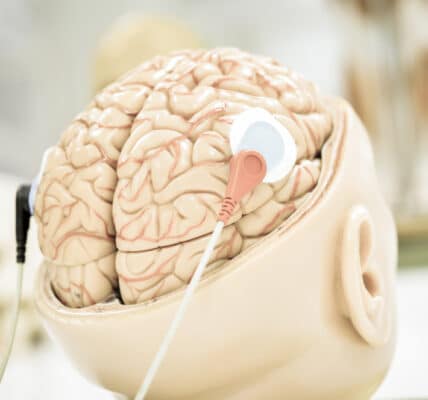Repairing the Chronic Brain Disease of Addiction

In my previous post at AddictionNews, I took a look at a recent study on wearable technology that points toward possible new therapies for substance use disorders. Today, I’ll be taking a look at how to repair chronic brain disease and, in particular, how to mitigate damage to the brain caused by addiction.
What happens to the human brain in recovery? Let’s look at a rather amazing longitudinal study out of the Department of Psychology at the Icahn School of Medicine at Mount Sinai in New York where researchers used neuroimaging to get inside the brains of people with substance use disorders and compare them with healthy brain scans.
Using 43 studies, they were able to find differences in the scans of people who had successfully completed treatment for substance use disorder and remained in recovery for 12 consecutive months with those still being treated for the disorder. What they found was that “the majority of studies demonstrated at least partial neurobiological recovery with abstinence.” More specifically, researchers found:
Structural recovery occurred predominantly in frontal cortical regions, the insula, hippocampus, and cerebellum. In addition to prefrontal cortical regions, functional recovery was also observed in midbrain, striatum, and thalamus.
Taking another approach to the brain damage caused by addiction is the irascible Dr. Reinout W. Wiers, whose forthcoming book, A New Approach to Addiction and Choice, was the subject of a chapter-by-chapter review at AddictionNews. Dr. Wiers is a pioneer in using conditioning techniques to train the brain against addiction cues, thereby lessening the severity of withdrawal symptoms, decreasing impulsivity, and improving reward delay mechanisms.
Proven in dozens of studies and now part of the required treatment for alcohol use disorder in many countries, Dr. Wiers’ methods involve desensitizing patients to reward signals for prohibited substances while rewarding making harmless choices. In an article with colleague Dr. Paul Verschure at the SPECS Institute for Bioengineering of Catalonia (IBEC) in Spain, Dr. Wiers’ argues for replacing the “chronic brain disease” model of addiction with “system-oriented neurorehabilitation.” According to the authors,
[…] neurorehabilitation should shift from a “broken-brain” to a systems theoretical framework, which includes high-level concepts related to the physical and social environment, motivation, self-image, and the meaning of alternative activities, which in turn will dynamically influence subsequent brain adaptations.
The authors present the case for using motivational interviewing and other tools from the Cognitive Behavioral Therapy (CBT) toolkit to help reestablish goals and rebuild self-esteem. Patients are simultaneously conditioned away from compulsive activities. Saying that addiction causes brain damage is about as helpful as saying life causes brain damage or experience causes brain damage. The issue is how to mitigate a series of problems to achieve the best possible outcomes.
Speaking of irascible addiction experts, I would be remiss to leave out Dr. Marc D. Lewis, author of The Biology of Desire (Public Affairs, 2015). Dr. Lewis’ work was the subject of a lengthy review in the journal, Neuroethics, by Dr. Anke Snoek of Maastricht University in The Netherlands, which builds on the self-agency unleashed by Dr. Lewis’ approach:
[An] agent can overcome this stage by developing new techniques of self-control, by building on their self-concept and belief in self-efficacy, by changing their environments and habits, and by engaging in projects that are meaningful to the agent.
Dr. Snoek stresses the importance of the ability to “experience success” as the reinforcement needed to stay sober along with the ability to recover from a relapse. “[R]estoring people’s sense of self-efficacy needs more than just telling [them] that they can do it because they do not have a disease.”
And that brings us all the way back to a familiar theme here at AddictionNews: contingency management. In its simplest form, contingency management is paying for clean drug screens. It’s built on the concept that the hardcore addict is broken and the best way to proceed is not to debate how they got there but to pay them to get better.
True addicts pretty much have their lives destroyed by addiction. Paying them to put it all behind them, make a new set of goals, and work to stay sober is the most humane solution to a terrible problem. It’s also the most affordable. Until we have little wearable guardian angels who keep us from making bad choices, contingency management is the best solution to a difficult problem.
Written by Steve O’Keefe. First published November 6, 2024.
Sources:
“Structural and functional brain recovery in individuals with substance use disorders during abstinence: A review of longitudinal neuroimaging studies,” Drug and Alcohol Dependence, March 2022.
“Curing the broken brain model of addiction: Neurorehabilitation from a systems perspective,” Addictive Behaviors, January 2021.
“How to Recover from a Brain Disease: Is Addiction a Disease, or Is there a Disease-like Stage in Addiction?” Neuroethics, March 2017.
Image Copyright: sdecoret.




